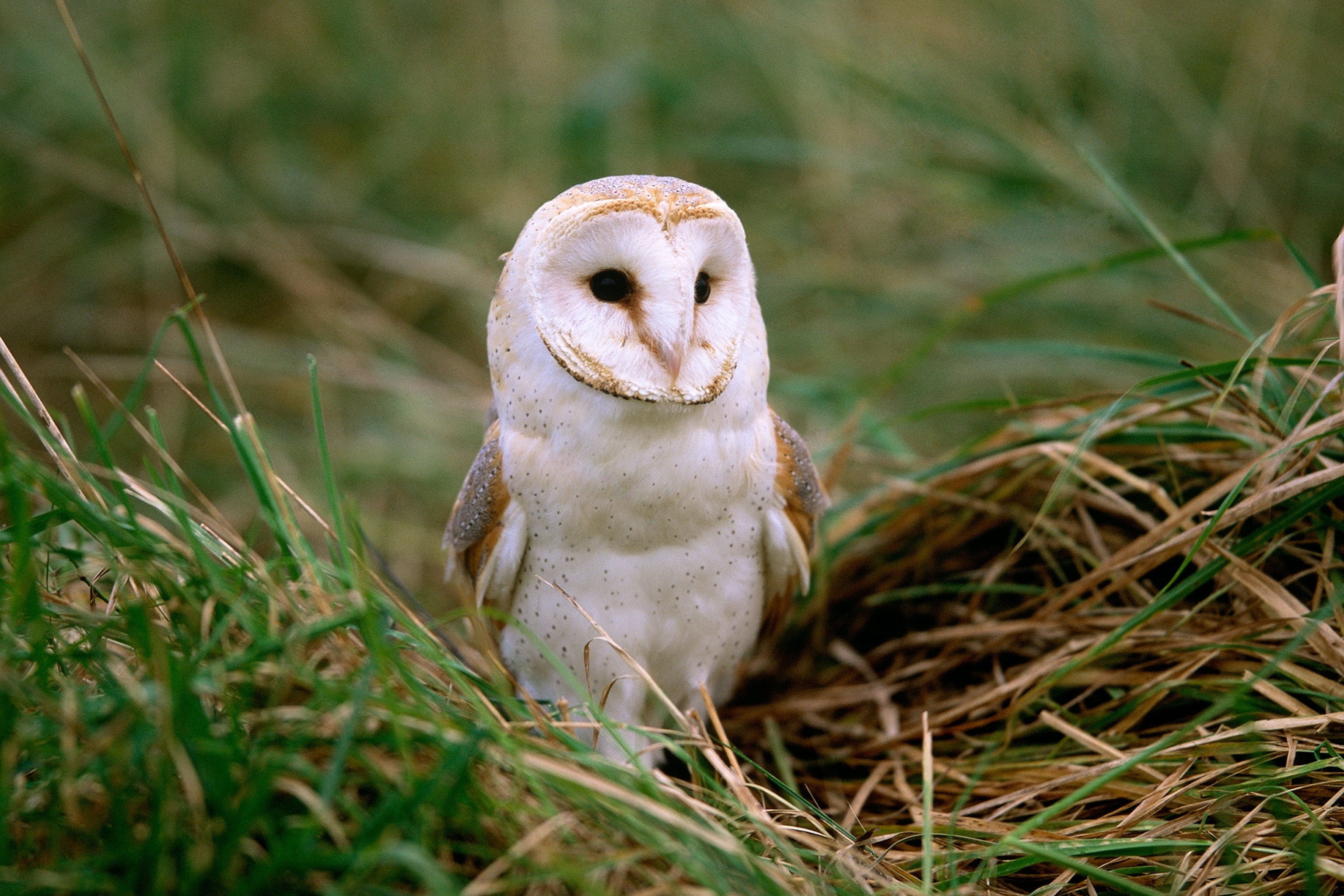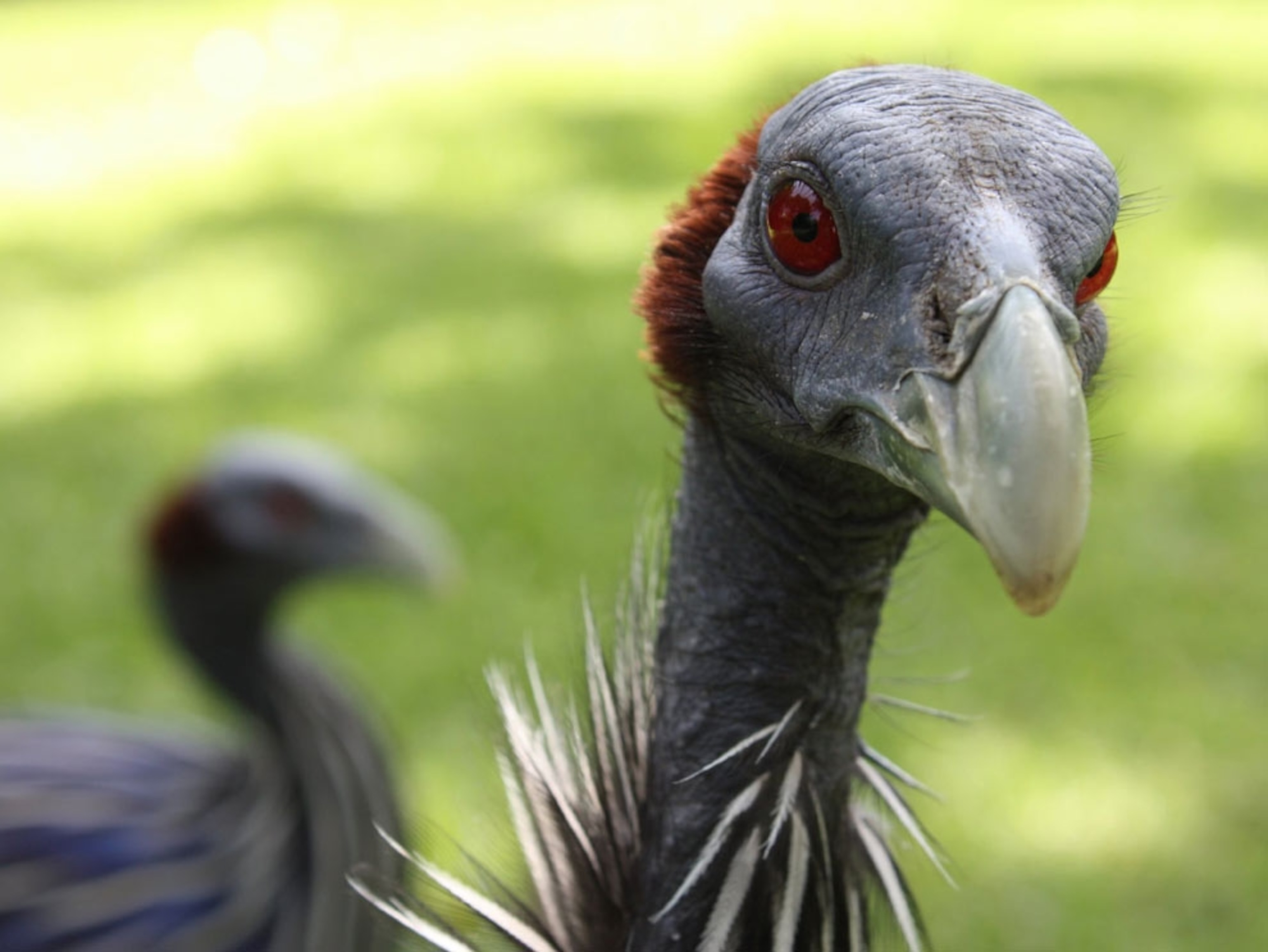
This superb owl can see with its eyes closed
For those who prefer fauna over football, these birds of prey do not disappoint.
If the only sport you really like is wordplay, you might want to sidestep the Super Bowl for the Superb Owl.
Reddit created the meme in 2014 to get around the NFL’s Super Bowl trademark, but it’s also an accurate assessment.
Owls are superb, from those haunting calls to spinning heads to soulful eyes.
What else contributes to the bird’s mystique, and what are some of the secrets behind their charisma?
Rotating heads
Owl eyes are so big they can’t move in their sockets—which is why they need that Exorcist-style head rotation, all thanks to an intricate system.
For one, their skulls sit on a single pivot point—allowing for more movement than our two-pivot points—and they have 14 neck bones to our seven.
Blood vessels in an owl’s neck are larger than in other animals and get bigger as they go up into the head, so “they don’t twist off their blood supply,” says James Duncan, author of the 2018 book Owls of the World.
Radar face
Owls’ round faces aren’t just cute—they act like satellite dishes.
The back of their facial disc has overlapping layers of stiff, dense feathers “tight enough to form a solid surface and direct sound to the ear, like our hands when we cup them around our ears to hear better,” Duncan says.
“By manipulating the shape of its facial disc, the owl can direct those sounds right into the ear.” (Learn more about the owl’s super-hearing.)
This exceptional hearing is how great gray owls, which have the biggest facial discs of any owl, can detect prey even under 18 inches of snow.

Owls with smaller facial discs, like the Arctic’s snowy owl, are more likely to hunt by sight than by sound.
Master manipulators
Oriental bay owls of southern Asia can maneuver their facial discs to create the appearance of horns, Duncan notes.
This could be for camouflage—to break up their owly outline—or to express emotion. The oriental bay owl’s huge black eyes also have white lids with slits that allow them to literally see with their eyes closed.
The northern white-faced scops of Africa, nicknamed the transformer owl, is especially dramatic in its ability to either make itself bigger or disappear, depending on the situation.

For instance, the birds can compress their plumage to appear smaller and squint to blend their feathers into surrounding trees, Duncan says.
Or, to intimidate aggressors, they can turn into “supersize owls,” spreading their wings and widening their eyes.
The great gray owl of North America doesn’t have to fake it. They’re the tallest species, at nearly three feet. (The smallest is the elf owl of the U.S. Southwest and central Mexico, which measures about five inches long.)
The North American species, which is endangered in California, is also surprisingly resilient. A massive wildfire that burned about a quarter of the species’ territory in 2013 did not do major harm to the birds, according to a new study in The Condor: Ornithological Applications. The owls are still nesting in the same forests, and their population remains stable.
Creative decorators

Rather than their looks, Florida burrowing owls transform their underground homes.
Allison Smith, a graduate student in the Department of Wildlife Ecology and Conservation at the University of Florida, says rural owls living on ranches will decorate the burrow and its environs with cow and coyote poop, while more upscale urban owls opt for dog poop and garbage. All will incorporate prey items and other natural objects.
This dung decor could repel predators, attract delicious bugs, or be a courtship ritual, Smith says. (Watch a mother owl take on a snake—and win.)
“I found one burrow last year with over 50 cigarette butts at it, and another with the legs from 72 frogs,” Smith says.
Related Topics
Go Further
Animals
- Orangutan seen using plants to heal wound for first timeOrangutan seen using plants to heal wound for first time
- What La Palma's 'lava tubes' tell us about life on other planetsWhat La Palma's 'lava tubes' tell us about life on other planets
- This fungus turns cicadas into zombies who procreate—then dieThis fungus turns cicadas into zombies who procreate—then die
- How can we protect grizzlies from their biggest threat—trains?How can we protect grizzlies from their biggest threat—trains?
Environment
- What La Palma's 'lava tubes' tell us about life on other planetsWhat La Palma's 'lava tubes' tell us about life on other planets
- How fungi form ‘fairy rings’ and inspire superstitionsHow fungi form ‘fairy rings’ and inspire superstitions
- Your favorite foods may not taste the same in the future. Here's why.Your favorite foods may not taste the same in the future. Here's why.
- Are the Great Lakes the key to solving America’s emissions conundrum?Are the Great Lakes the key to solving America’s emissions conundrum?
- The world’s historic sites face climate change. Can Petra lead the way?The world’s historic sites face climate change. Can Petra lead the way?
History & Culture
- Meet the ruthless king who unified the Kingdom of Hawai'iMeet the ruthless king who unified the Kingdom of Hawai'i
- Hawaii's Lei Day is about so much more than flowersHawaii's Lei Day is about so much more than flowers
- When treasure hunters find artifacts, who gets to keep them?When treasure hunters find artifacts, who gets to keep them?
Science
- Why ovaries are so crucial to women’s health and longevityWhy ovaries are so crucial to women’s health and longevity
- Orangutan seen using plants to heal wound for first timeOrangutan seen using plants to heal wound for first time
Travel
- Why this unlikely UK destination should be on your radarWhy this unlikely UK destination should be on your radar
- A slow journey around the islands of southern VietnamA slow journey around the islands of southern Vietnam
- Is it possible to climb Mount Everest responsibly?Is it possible to climb Mount Everest responsibly?
- 5 of Uganda’s most magnificent national parks
- Paid Content
5 of Uganda’s most magnificent national parks


















